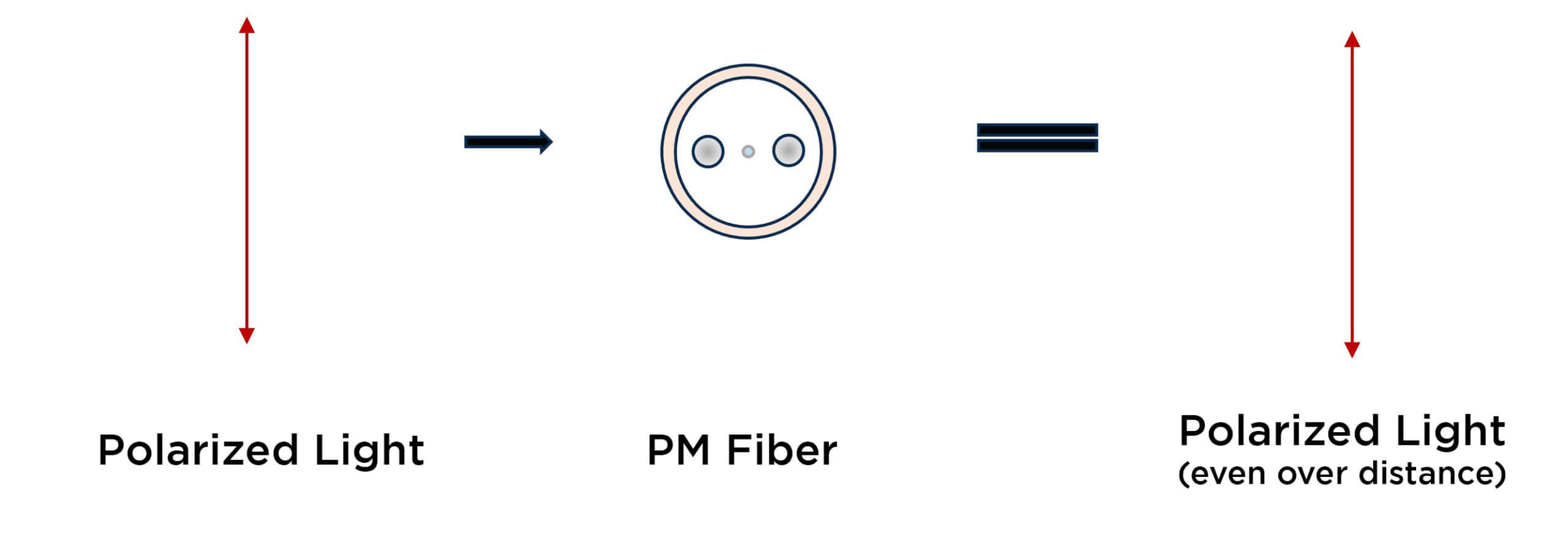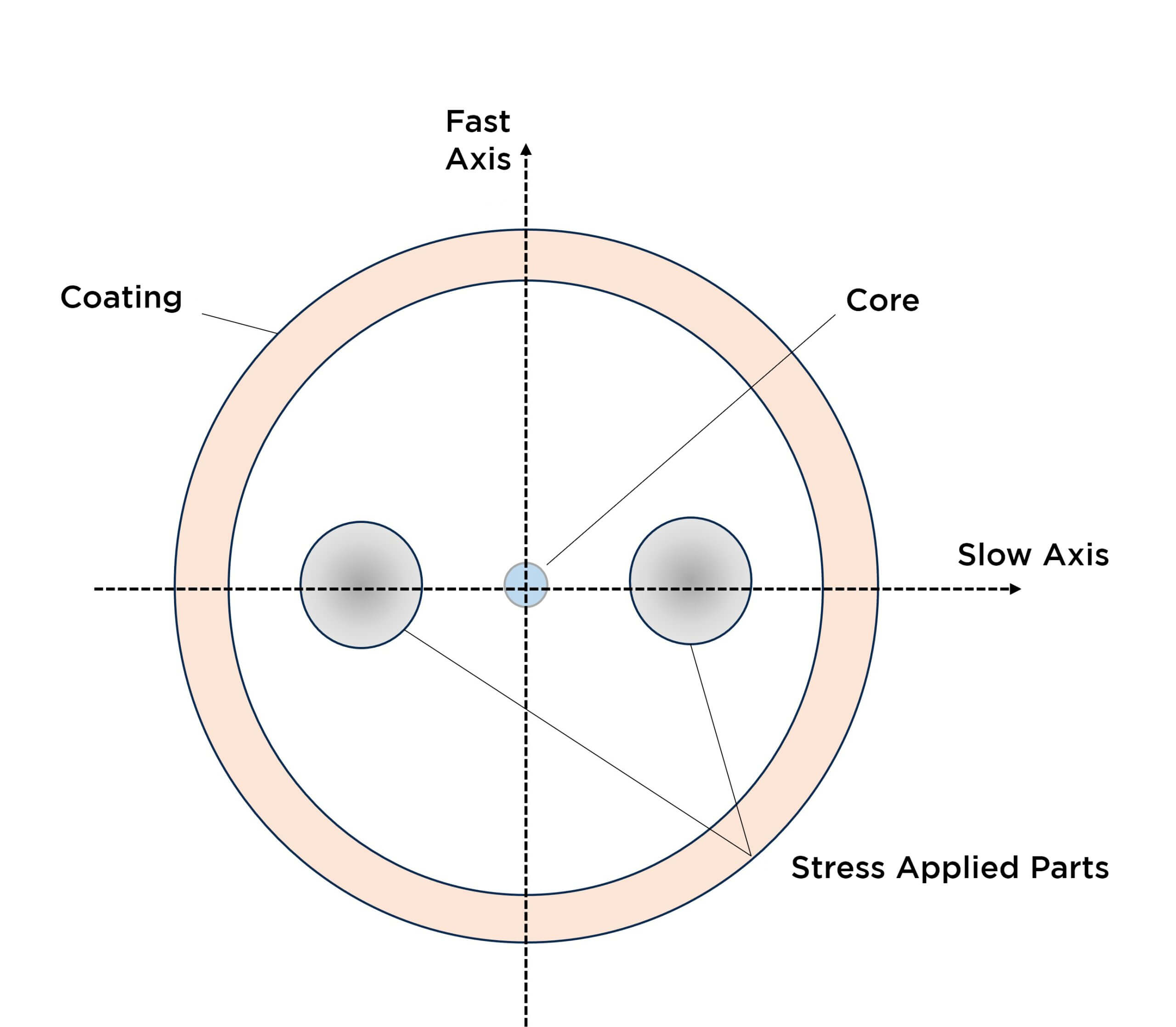Regular circular-core optical fibers have very low birefringence (refractive index dependence on polarization), and the guided light polarization state can change during propagation. Along the fiber length, some birefringence can be induced due to external perturbations (load, bend, etc.) or imperfections. This brings a random power coupling between the polarization modes (polarization crosstalk) and unpredictable output polarization states that change over time.
As part of fiber optic communication systems, the randomly polarized light generated polarization-mode dispersion (PMD). PMD is a phenomenon where polarization states of light travel at different speeds, leading to signal degradation and limiting communication distances. That was sufficient motivation to develop Polarization Maintaining (PM) fibers.
PM fibers have been under development since the 1970s. The original goal was to provide a solution that could preserve the polarization of light signals, ensuring reliable and high-quality transmission in fiber optic communication systems. Even though PM fibers are less used in telecommunications today, they are used in many other applications, as we will see.
There are different ways to design and build PM fibers. Coractive PM fibers are produced in what is called the PANDA configuration (Polarization Maintaining AND Absorption Reducing).


